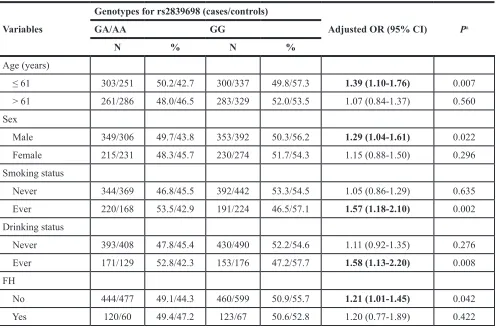Association of genetic variants in lncRNA H19 with risk of colorectal cancer in a Chinese population
Full text
Figure



Related documents
Having multiple FAs, a current epinephrine prescription, a history of 1 or more lifetime FA-related ED visits, or comorbid asthma were also significantly associated with
OCR’s policymaking record suggests that competing practical and doctrinal considerations fail to counterbalance the agency’s incen- tives to employ particular policymaking
T 3 also enhanced the accumulation by thymocytes of the nonmetabolized glucose analogue, 3- O -methylglucose (3- O -MG), an effect that was evidently the result of an increase in 3-
TyG in comparison to other mark- ers like fasting triglycerides, HOMAIR, HDLc and non-HDLc was the only marker which showed higher or near equivalent linear correlation with multiple
There is a natural method to obtain a two-message delegation scheme from a designated-verifier non- interactive succinct argument for NP with adaptive soundness : the delegator
Leap Motion can provide a good hand tracking algorithm, but is not enough for the recognition of complex gesture.. In order to make a better recognition of the gesture, so
ISO induced myocardial infarction was confirmed by disturbances in serum and heart tissue marker enzymes such as lactate dehydrogenase LDH, creatine kinase CK, CK-MB,
Using Canadian Census data for the endpoint of the surveillance period (2001) for the pediatric population (under 19 years) then the incidence would be 0.06 per million children